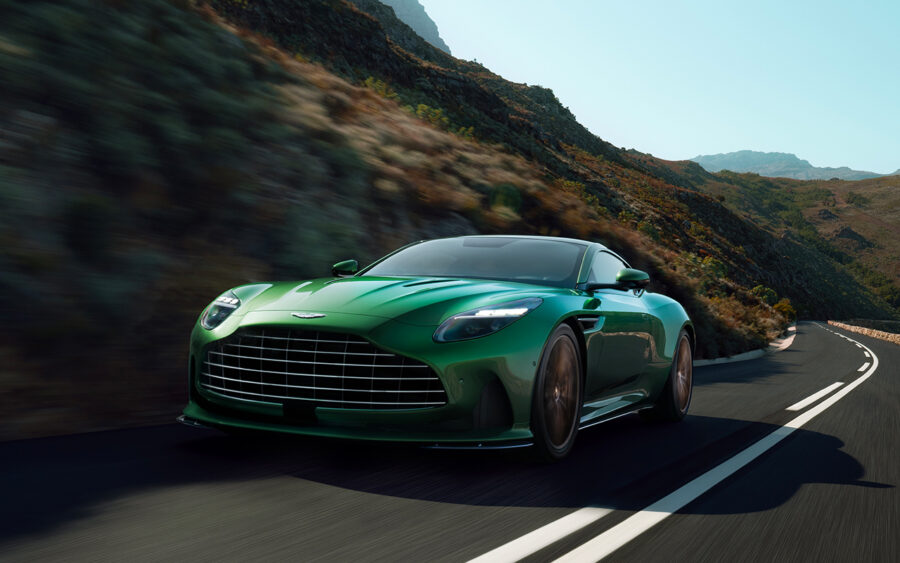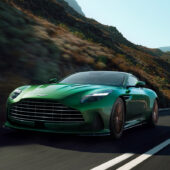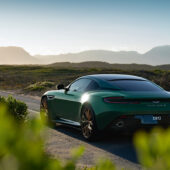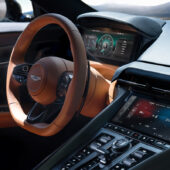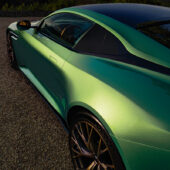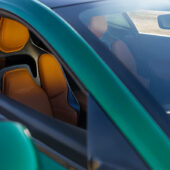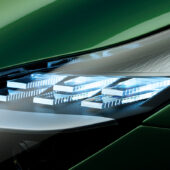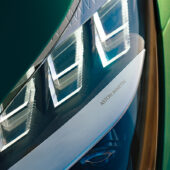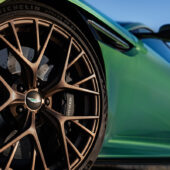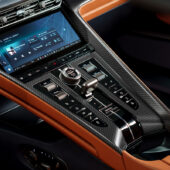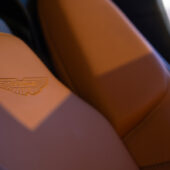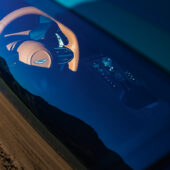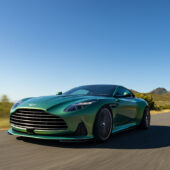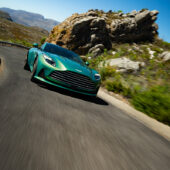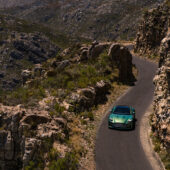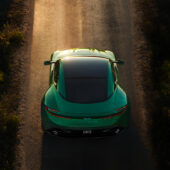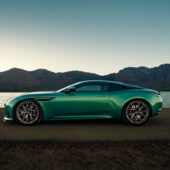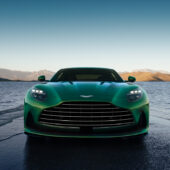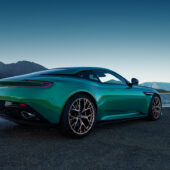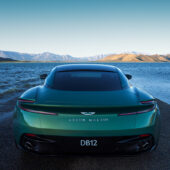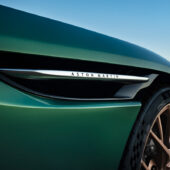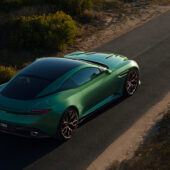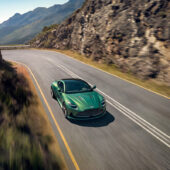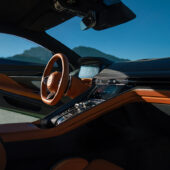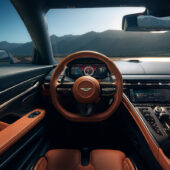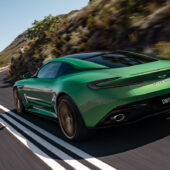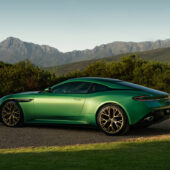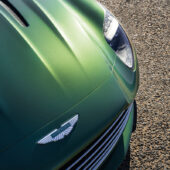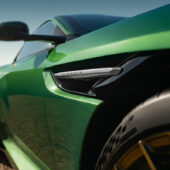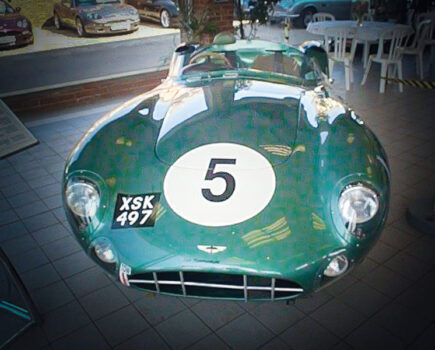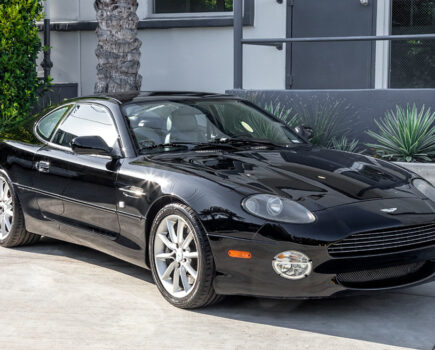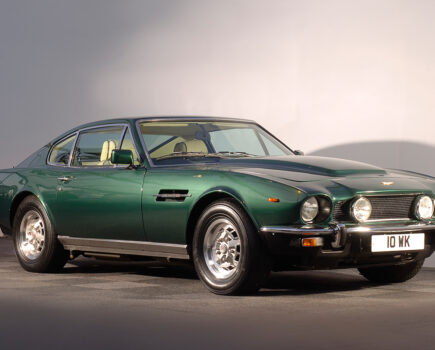New Aston Martin DB12 gets V8 power, all-new suspension and welcome interior overhaul in bid to take the fight to Ferrari
Words: James Howe
This is the new Aston Martin DB12, a direct replacement for the outgoing DB11 and, at least for now, the DBS Superleggera. With modern rivals like the Ferrari Roma and Bentley Continental GT getting the upper hand over the old car in recent years, Aston’s focus has been on delivering more power, improved dynamics and – perhaps most crucially – a thoroughly reworked interior.
While still based on the same platform as the car it replaces, the DB12 sports a new, more aggressive design that blends the svelte good looks of the DB11 with the aggression of the DBS. The enlarged trademark Aston grille dominates the front end flanked by new LED headlights, while clean, smoothed side panels lead towards a more familiar-looking rear end. New 21-inch standard-fit forged alloy wheels (8kg lighter than the outgoing 20-inch versions) and smaller, frameless wing mirrors set off the DB12’s modernised design.
The famous Aston Martin V12 is notable by its absence in the DB12, replaced solely by an uprated version of the now-familiar AMG-sourced 4.0-litre twin-turbo V8. The hand-built unit produces 671bhp at 6000rpm and a healthy 800Nm of torque between 2750 and 6000rpm; 0-62mph is sorted in 3.5 seconds and top speed is 202mph. Aston says these increases in power and torque were achieved via new cam profiles, optimised compression ratios, larger turbochargers, plus reworked engine- and oil-cooling systems – which may account for the size of the DB12’s new grille. Power is fed through an eight-speed automatic gearbox with a shortened final drive and improved shift speeds.

In its quest to deliver on its ‘super tourer’ brief, Aston Martin has paid particular attention to the DB12’s dynamic character. An electronic differential features for the first time on an Aston, linked to a revised ESC system. The company claims improvements in cornering, with more agility and response at low speeds and ‘total composure’ in high-speed bends.
The car is 7% stiffer than its predecessor thanks to new braces and undertrays, which in turn allows the DB12’s new suspension to do its best work. Adaptive dampers and stiffened anti-roll bars are employed, with claimed improvements in refinement, steering feel and driver connection. The DB12 is set to be the first car to use the latest Michelin Pilot Sport 5 S tyres as standard equipment, measuring in at 275/35 R21 front and 315/30 R21 at the rear, complete with a bespoke compound and accompanying ‘AML’ markings.
While the DB12’s exterior styling and engine are new yet familiar, the same can’t be said for the thoroughly overhauled interior. Aston has clearly made a concerted effort to reach the bar set by its rivals, ditching the dated, Mercedes-sourced infotainment in favour of its first-ever bespoke system. Displayed across two 10.25-inch high-resolution touchscreens, the new infotainment incorporates wireless Apple CarPlay and Android Auto connectivity, a new internet-connected 3D sat-nav system and an all-new accompanying smartphone app.
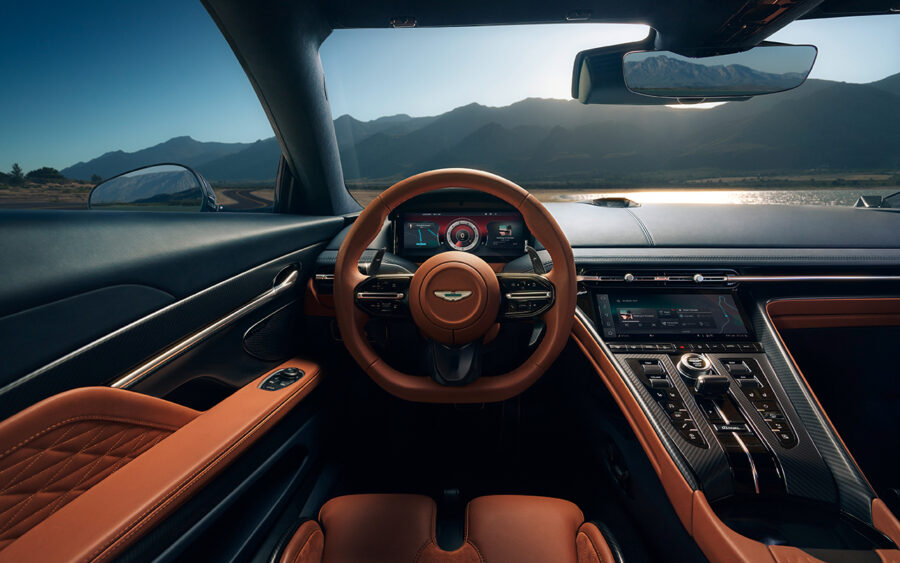
Leather and Alcantara upholstery abounds as expected, but here it’s used to trim a clean, unfussy dashboard with strong horizontal lines and a driver-focussed feel. The centre console rises high between the front seats, with a rotary switch presented within easy reach to switch between the car’s five drive modes: GT, Sport, Sport+, Wet and user-adjustable Individual.
The standard-fit 390W 11-speaker audio system can be replaced by an optional system from Aston’s new audio partner Bowers & Wilkins – a 1170W, 15-speaker setup with dedicated 3D headline speakers and a subwoofer.
Pricing for the new Aston Martin DB12 is yet to be announced but it’s safe to expect a premium over the outgoing DB11 V8. Customer deliveries are expected to begin in Q3 2023.

